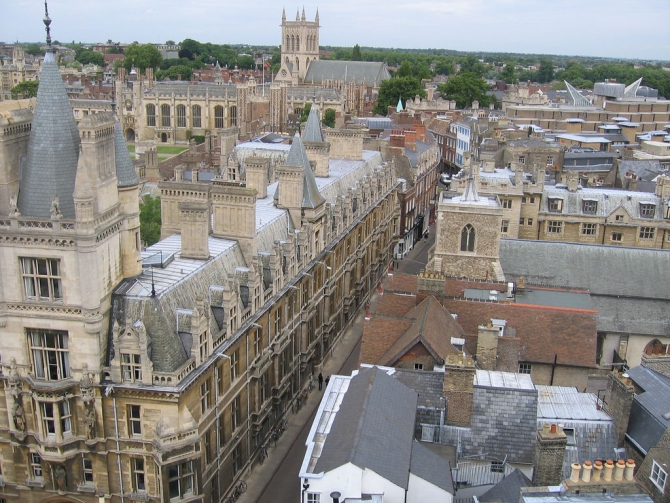Cambridge has emerged as the clear winner in a new survey attempting to find the best long-term property investment location outside London.

In its latest Market Differentials report, Legal & General Property’s (LGP) research team attempted to find which areas of the UK were most likely to outperform for a ten year portfolio. Unlike other studies that compare area differentials, LGP examined local authority-level data such as employment growth prospects, local entrepreneurship, education and population growth, and amenities and housing.
Tracking data over the past decade, the research considered 180 of the UK’s 380 local authority areas because these represent 75 per cent of the nation’s workforce.
Eight out of the top 10 areas identified as hot-spots were London boroughs, with Tower Hamlets, the City of London, Westminster, Southwark and Islington taking the top spots. “Overall, London stands apart from the rest of the UK on a number of the characteristics we deem key to drive long-term growth in property demand,” explained Bill Page, LGP’s business space research manager.
“But there are locations that show similar strength outside of London and the South East, which merit active consideration when looking to deploy investment capital. In-depth knowledge can create compelling and sometime unexpected investment opportunities.”
Beyond the capital there is one stand-out location for property investors. “Cambridge is the second-strongest area outside London, and eighth strongest overall in the UK,” says Page. “In 2010 there were just six buildings at the science park, demanding rents of around £20 per square foot. Something has happened and the area is now underpinned by 100 companies and total returns on property investments hit nine per cent in 2011-2013 — way ahead of the five per cent UK average.
“If investors are looking for the next office-investment hotspot, then they could be very happy with Cambridge,” he said.
The traditional understanding of a north-south divide no longer holds good, points out the report, with a number of relatively well-positioned areas beyond the south of England, including Aberdeen, Edinburgh and Manchester. Underpinning the benefits of a more “nuanced approach to investment”, the research argues against the overly simplistic idea of a clear north-south cut off.
The survey lists the 25 office hot-spots by local authority. They are: Tower Hamlets, City of London, Westminster, Southwark, Islington, Camden, Watford, Cambridge, Lambeth, Hounslow, Richmond-upon-Thames, Hackney, Reading, Kensington and Chelsea, Hammersmith and Fulham, Reigate and Banstead, Haringey, Basingstoke and Deane, Stratford-on-Avon, Welwyn Hatfield, Kingston-upon-Thames, Oxford, Aberdeen City, City of Edinburgh and Windsor and Maidenhead.
“From a fund-management perspective, the only aspect of a property that cannot be changed is its location,” concludes Page. “Understanding occupier demand at a granular, local level therefore underpins future performance prospects and should play an integral part in any effective long-term investment strategy.”
Previous Post
Store Closures Possible at struggling Mamas and Papas